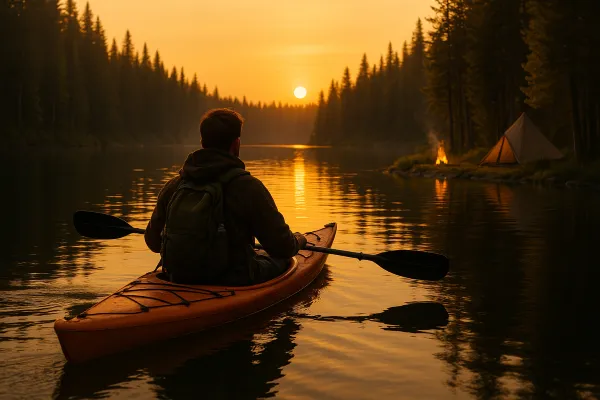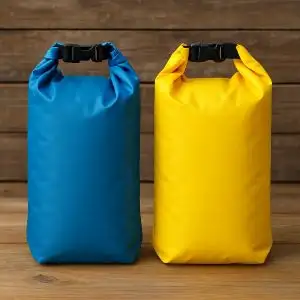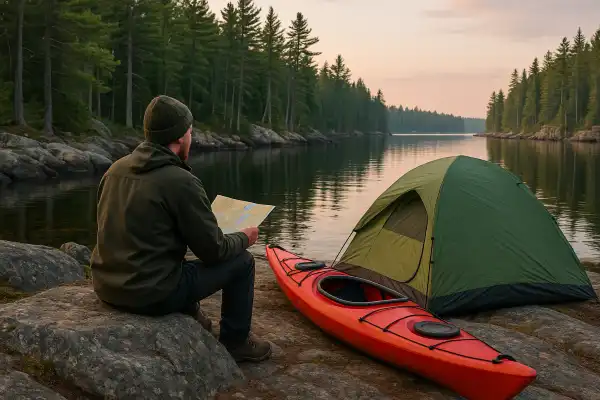What is kayak camping? This question surfaces regularly among paddlers who’ve caught wind of this adventure hybrid but aren’t quite sure what separates it from regular camping or day kayaking. The curiosity makes perfect sense—combining two beloved outdoor activities creates unique opportunities and challenges that traditional camping simply can’t offer.
Three summers ago, I guided a family through their first kayak camping experience in the Everglades. Watching their transformation from nervous novices to confident paddle-campers reminded me why this pursuit captures so many hearts. The blend of water travel and wilderness camping opens doors to places vehicles can’t reach while offering a pace that backpacking can’t match.
Must read for your safety when kayak camping: How to get rid of spider in a kayak?
What is kayak camping?
Kayak camping combines your love of kayaking with your love of camping, using your kayak as a means of transportation between camping spots over the course of one or several days. Unlike regular camping where you drive to a campground, kayak camping treats water as your highway to remote campsites accessible only by paddle.

You pack your vessel with all the essentials and creature comforts for an outdoor overnight, and then treat the water as your trail. This adventure style bridges the gap between minimalist backpacking and car camping—you can carry more gear than a backpacker since your kayak does the hauling, but space and weight limitations still demand thoughtful packing decisions.
The fundamental differences from other camping styles
Kayak camping stands apart from both backpacking and car camping in several key ways. It splits the difference between backpacking with its sparse packing list and traditional camping with its overabundance of stuff. Your kayak provides more carrying capacity than your back, yet demands strategic weight distribution and waterproof storage that car camping never requires.
Everything you use must be brought with you and taken out again, following Leave No Trace principles that protect the pristine waterways we cherish. The access to untouched locations makes this effort worthwhile—paddling your way to a unique, untouched spot can be a special part of kayak camping.
Essential gear considerations
The gear equation changes dramatically when water becomes your primary transportation method. Dry bags become absolutely critical—aside from a few accessible items like water and snacks, everything should be packed in waterproof storage. Even if you’re certain you won’t flip, anything stored on the kayak or in the hull will likely get wet.
Multiple smaller dry bags work better than fewer large ones for several practical reasons. They fit better in the oddly-shaped interior spaces of most kayaks, allow better organization, and make finding specific items much easier without unpacking everything. Pack one bag for clothing, one for sleeping gear, one for safety or first-aid, then label each clearly with waterproof tape and marker.

Weight distribution becomes crucial for both safety and comfort. Heavier things should go near the center and lighter things tucked further away to maintain proper kayak balance. Poor weight distribution can make your kayak unstable, difficult to paddle efficiently, or even dangerous in rough conditions.
Safety and skills requirements
Kayak camping demands a higher skill level than day paddling. Strong paddling skills are required to reach your campsite safely and efficiently. For canoe camping specifically, mastering the J stroke is vital—without it, you’re constantly dripping water on your stuff and just plain working too hard.
Safety gear becomes essential: paddle float, bilge pump, and whistle should be standard equipment. Personal flotation devices must be Coast Guard-approved and worn at all times, while emergency gear like a multi-tool, kayak repair kit, and basic safety equipment could prove life-saving in remote locations.
Communication planning takes on extra importance when camping in areas without cell coverage. Keep your cell phone in a waterproof case and consider a marine radio for ocean environments. Always file a float plan with someone reliable, detailing your route and expected return time.
Choosing appropriate waterways and campsites
There’s no national database of canoe and kayaking campsites, so you may have to get creative to find a paddle-in spot. Research park websites, as some national, state and local parks allow canoe and/or kayak camping. Recreation.gov can also help locate suitable sites.

Stick to established campsites whenever they’re available to minimize environmental impact. These sites often provide basic amenities like fire pits, level sleeping areas, and pit toilets. When established sites aren’t available, campsites should be located no less than 200 feet away from all fresh water sources to prevent contamination.
Planning your first trip
For new paddlers, limit your kayak trip to just one or two days to reduce gear requirements and complexity. Stay close to home within a 100-mile radius or 2-hour drive to maximize time on the water rather than driving.
Create a list of things you’re going to need, record where those items are stored, and highlight items that still need to be purchased. Then review it before departure. This systematic approach prevents forgotten essentials that could ruin your trip.
Start with familiar waters where you’ve day-paddled before, then gradually expand to new areas as your skills and confidence grow. If you or your friends are new to kayak or canoe camping, start with a one-night trip to get a feel for the physical and mental demands.
Water and food considerations
The basic rule of a gallon of water per person per day still holds. If you’re paddling on fresh water, or on salt water where you can get access to fresh water streams, a water filter is an easy way to keep from having to carry all your water. Collapsible water containers are essential since rigid containers don’t fit well in kayak storage compartments.

Food planning differs from backpacking since weight matters less than waterproofing and space efficiency. Pack meals in waterproof containers within dry bags, and consider how you’ll manage cooking gear and cleanup in camp. Look for gear that serves double duty—like a spork instead of separate utensils.
Conclusion
Last September, I took my touring kayak on a three-day solo journey through the Boundary Waters. Loading my gear into perfectly organized dry bags, I remembered how overwhelming kayak camping seemed during my first attempt years ago. The difference this time? Following a systematic approach to gear selection, safety planning, and campsite research. What once felt chaotic now flowed naturally—proof that proper preparation transforms kayak camping from a stressful endeavor into the peaceful wilderness escape it’s meant to be. That’s the power of understanding not just what kayak camping is, but how to do it right.
Follow Expobright for exclusive kayak and canoe camping tips.
